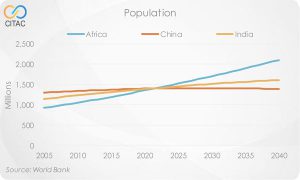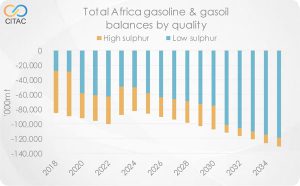African Oil Product Specifications Outlook: Progress & Challenges
Rising awareness
Across the globe, environmental issues are increasingly becoming the focus of civil society, companies and governments. In Africa, most of the discussions and progress have concentrated on changing specifications, particularly sulphur limits in gasoline and gasoil. While it is worth noting that lead was phased out in a well-coordinated pan-African move in 2006, progress on other specifications, contributing to harmful emissions, has been limited.
Moving forward
Moving forward, the pressure on governments to improve specifications towards a 50ppm sulphur minimum limit (or even to 10ppm) will only grow as the detrimental effects of vehicle emissions intensify with the evolving fundamentals, namely population, urbanisation, and vehicle fleet growth.
More and more Africans are converging on urban centres, largely due to economic migration. Indeed, since 2005, the urban share of the total population has grown from 36% to 41%. Outright numbers have also been increasing rapidly: while in 2005 urban populations totalled just 331mn, by 2018 this rose to 523mn. The trend is forecast to continue by the World Bank, with urban populations rising to 49% of Africa’s total by 2050, or 1bn people.


Urbanisation brings with it major challenges for African governments, one of which is the deterioration of air quality. With more people concentrated in cities and commuting by vehicle over greater distances, the concentration of pollutants in the air will intensify.
Fortunately, African governments are increasingly aware of the fundamentals at play and are acting to improve the quality of oil products and are considering how to tackle the politically difficult issues of higher fuel prices and controlling the quality of the vehicle fleet from an environmental perspective.
The outlook for African gasoline and gasoil balances, therefore, is a rapidly shrinking share of high sulphur imports into the continent. According to CITAC’s analysis, the share of low sulphur (500ppm S or lower) product in African gasoline and gasoil imports is set to grow rapidly from 32% currently to 68% by 2025 and 91% by 2031 as countries move to adopt new specifications.


Jeremy Parker, Consultant – April 2019
Purchase this Industry Insight